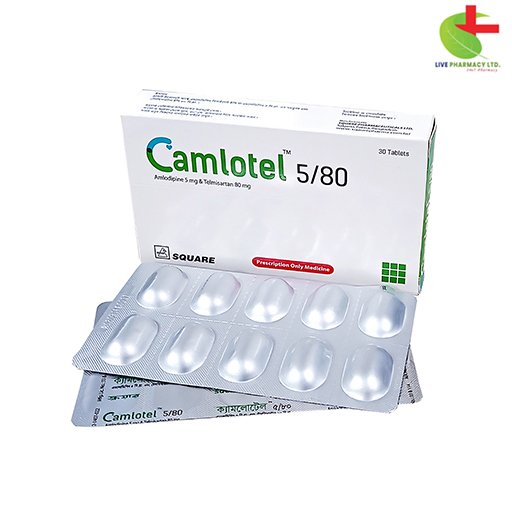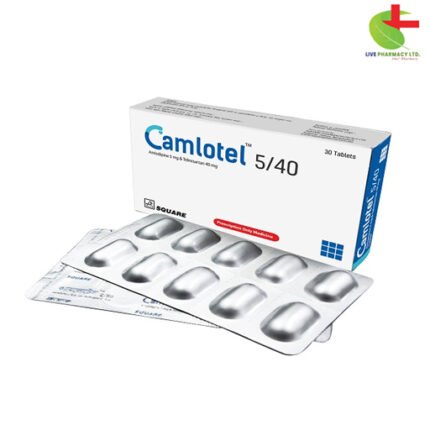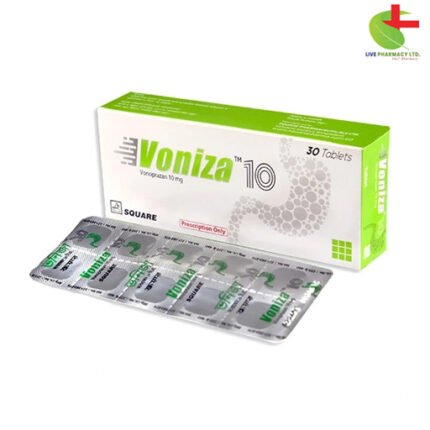Camlotel 5/80
200.00৳ Strip
- Our medication combines Telmisartan and Amiodipine for effective hypertension management.
- Tailored dosing options cater to individual patient needs, ensuring optimal blood pressure control.
- With minimal side effects and comprehensive contraindication guidance, patient safety is our top priority.
- Trust our potent formulation to deliver reliable results while prioritizing your well-being.
 Brand
Brand
|
Square Pharmaceuticals PLC |
|---|---|
 Generics
Generics
|
Amlodipine Besilate + Telmisartan |
Indications
This medication is recommended for managing hypertension either independently or alongside other antihypertensive medications. Additionally, it can serve as an initial treatment option for patients requiring multiple drugs to attain their blood pressure targets.
Pharmacology
The formulation combines Telmisartan and Amiodipine. Telmisartan, categorized as a non-peptide angiotensin receptor blocker (ARB), functions as a specific antagonist for the angiotensin II AT1 subtype receptor. By selectively blocking angiotensin II binding to the AT1 receptor in various tissues, including vascular smooth muscle and the adrenal gland, Telmisartan mitigates vasoconstriction and aldosterone secretion, thereby dilating blood vessels and reducing blood pressure without impacting pulse rate significantly. On the other hand, Amiodipine, a dihydropyridine calcium-channel blocker (CCB), inhibits calcium ion influx into vascular and cardiac smooth muscle cells, resulting in peripheral arterial vasodilation, reduced peripheral vascular resistance, and consequent blood pressure reduction.
Dosage & Administration
For initial therapy, patients may commence with a daily dosage of 40/5 mg, with the option to escalate to 80/5 mg if greater blood pressure reduction is required. It is advised against initiating initial therapy with this medication in patients aged 75 years or older or those with hepatic impairment. Add-on therapy and replacement therapy protocols are also available for patients not adequately controlled with other antihypertensive agents.
Interactions
Clinical studies indicate that co-administration of Telmisartan does not result in clinically significant interactions with commonly used medications, including acetaminophen, amiodipine, glyburide, simvastatin, hydrochlorothiazide, warfarin, or ibuprofen. Likewise, Amiodipine has demonstrated compatibility with various medications, such as thiazide diuretics, beta-blockers, angiotensin-converting enzyme inhibitors, and others.
Contraindications
Patients with known hypersensitivity to the product or any of its constituents, those with biliary obstructive disorders, severe hepatic impairment, hypotension, cardiogenic shock, or left ventricle outflow tract obstruction are advised against using this medication. Pregnant and lactating women should also avoid its use.
Side Effects
Potential side effects may include dizziness, peripheral edema, headache, palpitations, cough, abdominal pain, nausea, fatigue, and others.
Pregnancy & Lactation
This medication is categorized as Pregnancy Categories C (first trimester) and D (second and third trimesters). As its excretion in human milk remains unknown, caution is advised, and nursing mothers should either discontinue breastfeeding or the medication, considering its importance to the mother.
Precautions & Warnings
Special precautions include avoiding fetal or neonatal exposure, correcting any volume or salt depletion before initiating therapy, monitoring for signs of hypotension, titrating slowly in patients with hepatic or severe renal impairment, and more.
Use in Special Populations
Safety and effectiveness in pediatric patients have not been established, and initial therapy is not recommended for geriatric patients aged 75 years or older or those with hepatic impairment.
Overdose Effects
Manifestations of overdose may include hypotension, dizziness, tachycardia, and other symptoms. Management involves supportive measures, and caution is advised against overdosing.
Therapeutic Class
This product falls under the category of combined antihypertensive preparations.
Storage Conditions
To maintain potency and integrity, store this medication below 30°C, shielded from light and excessive humidity, and out of children’s reach.













Reviews
There are no reviews yet.